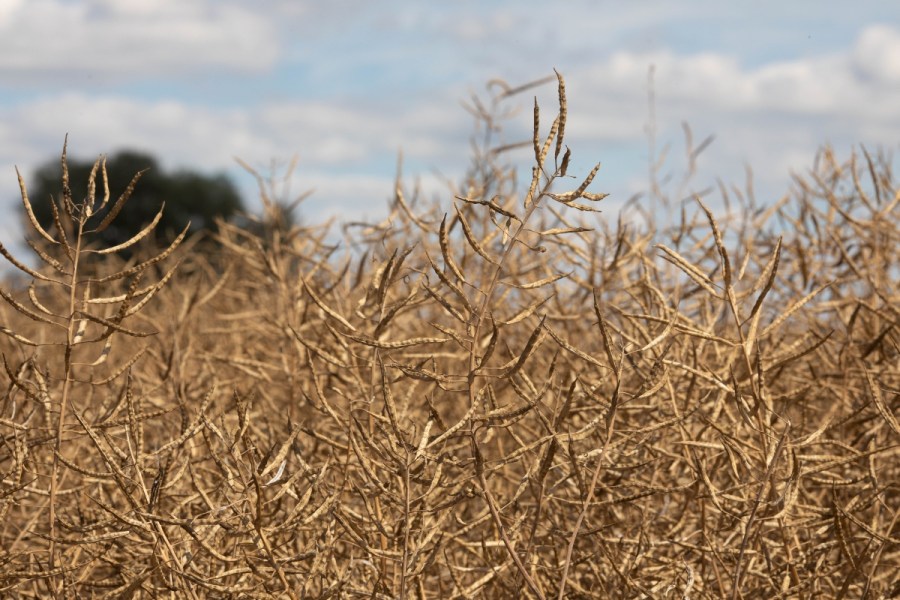With harvest fast-approaching, preparing oilseed rape crops for the combine is top of farmers to-do list. Spraying with glyphosate is often the method of choice on many farms but correct timing is vital, according to the latest advice from Bayer.
“There tends to be some variability in development and senescence in the OSR crop. Spraying with Roundup (glyphosate) evens this out and makes harvest planning and operations more straightforward,” says Bayer’s Roger Bradbury. “But farmers shouldn’t be too eager to spray off crops, applying too early can cut yield and oil content while increasing levels of red seed.”
The pod test
By the time of spraying, the crop should have already begun to senesce, and farmers should check this by assessing the pods. “Go into the crop away from headlands and tramlines to get a representative area,” says Roger.
“Next you should to select an area of the canopy which is typical of the maturity for the majority of the crop. This could be the middle of the main raceme or on the side branches depending on the canopy. Select 20 pods, if in 15 of these pods, two-thirds of seed has changed from green to brown then it is at the earliest correct stage to start spraying.”
He also points out that farmers should err on the side of caution because spraying too early is much more of a problem than leaving it a little later.
Effective application
There are potentially targets throughout the canopy ranging from the pods, green material in the base. “You’re looking for some penetration throughout the canopy, rather than keeping it in one specific zone,” says Matt Redman, a farmer and sprayer contractor from Redman Agriculture in Cambridgeshire.
“I usually use an 03 Guardian Air nozzle for two reasons – one to control drift as you’re using glyphosate, but it also helps get penetration through the canopy and gives you the splatter effect of an air induction nozzle when it hits the target so you get the coverage.”
Water volume will be anywhere between 100 and 200l/ha, he says, with final choice determined by wanting to maintain a 2.5-3 bar pressure for the nozzle chosen.
“I’d use an 03 at 100l/ha, but if you have an 035 you might want to be 120-130l/ha, and 150l/ha if you have a bigger nozzle, or you have to go slower because it’s bumpy and you need to up the water volume to maintain the pressure with the nozzle you’re using.”
Select the rate
Target perennial weeds at the same time if they are a problem. At this time of year, glyphosate is translocated to the rhizome ensuring a good kill and reduced viability in future. Roger advises applying 1440g/ha of glyphosate to OSR with perennial weed problems or 1080g/ha to OSR with some annual weeds. “Consider using a modern Roundup formulation. They are designed for quick penetration of the target and rainfastness. They also continue to perform well in difficult conditions such as high temperatures.”




